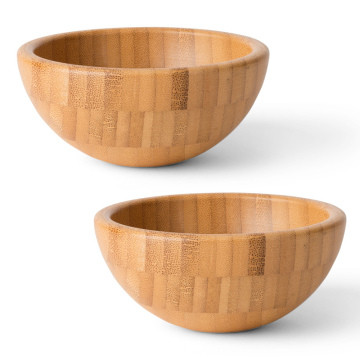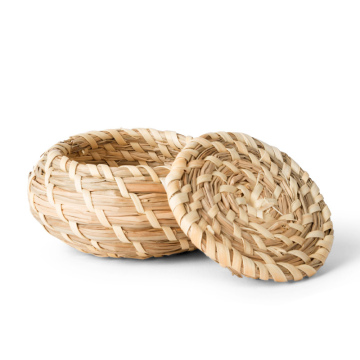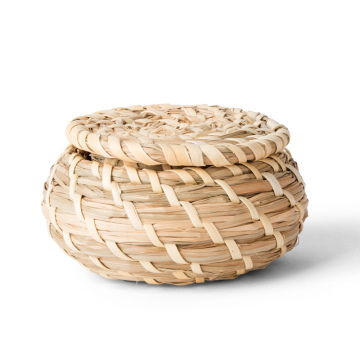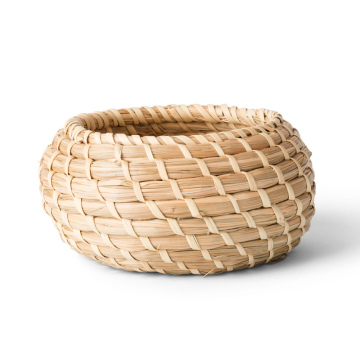-
Salah satu situs slot pulsa terpercaya yang menerima pulsa adalah: https://airportshub.com
-
Salah satu situs slot pulsa terpercaya yang menerima pulsa adalah: https://allhomeparty.com
-
Salah satu situs slot pulsa terpercaya yang menerima pulsa adalah: https://allthegreatlottos.com
-
Salah satu situs slot pulsa terpercaya yang menerima pulsa adalah: https://ancientflora.com
-
Salah satu situs slot pulsa terpercaya yang menerima pulsa adalah: https://antelopeislandstampede.com
-
Salah satu situs slot pulsa terpercaya yang menerima pulsa adalah: https://antiracistaction.ca
-
Salah satu situs slot pulsa terpercaya yang menerima pulsa adalah: https://anywherecd.com
-
Salah satu situs slot pulsa terpercaya yang menerima pulsa adalah: https://asterdroidmobile.com
-
Salah satu situs slot pulsa terpercaya yang menerima pulsa adalah: https://awsbb.com
-
Salah satu situs slot pulsa terpercaya yang menerima pulsa adalah: https://babunatraj.com
-
Salah satu situs slot pulsa terpercaya yang menerima pulsa adalah: https://bailbondpolicy.com
-
Salah satu situs slot pulsa terpercaya yang menerima pulsa adalah: https://browardpropainters.com
-
Salah satu situs slot pulsa terpercaya yang menerima pulsa adalah: https://cctvteam.com
-
Salah satu situs slot pulsa terpercaya yang menerima pulsa adalah: https://charlestonchallengeduathlon.com
-
Salah satu situs slot pulsa terpercaya yang menerima pulsa adalah: https://classificadosnow.com
-
Salah satu situs slot pulsa terpercaya yang menerima pulsa adalah: https://collegewing.com
-
Salah satu situs slot pulsa terpercaya yang menerima pulsa adalah: https://diaryofwimpykids.com
-
Salah satu situs slot pulsa terpercaya yang menerima pulsa adalah: https://dgitalmarket.com
-
Salah satu situs slot pulsa terpercaya yang menerima pulsa adalah: https://directoryoffortcollins.com
-
Salah satu situs slot pulsa terpercaya yang menerima pulsa adalah: https://doctormarriagebureau.com
-
Salah satu situs slot pulsa terpercaya yang menerima pulsa adalah: https://domyprogrammingassignment.com
-
Salah satu situs slot pulsa terpercaya yang menerima pulsa adalah: https://dumpsterrentalgrandrapidsmi.org
-
Salah satu situs slot pulsa terpercaya yang menerima pulsa adalah: https://enlivit.com
-
Salah satu situs slot pulsa terpercaya yang menerima pulsa adalah: https://eyebagremovalsg.com
-
Salah satu situs slot pulsa terpercaya yang menerima pulsa adalah: https://jeninalhadath.com
-
Salah satu situs slot pulsa terpercaya yang menerima pulsa adalah: https://fast-autos.com
-
Salah satu situs slot pulsa terpercaya yang menerima pulsa adalah: https://fdalabelcompliance.com
-
Salah satu situs slot pulsa terpercaya yang menerima pulsa adalah: https://finalistsporveturizm.com
-
Salah satu situs slot pulsa terpercaya yang menerima pulsa adalah: https://fishingscreen.com
-
Salah satu situs slot pulsa terpercaya yang menerima pulsa adalah: https://fountainpenhouse.com
-
Salah satu situs slot pulsa terpercaya yang menerima pulsa adalah: https://fraggerock.com
-
Salah satu situs slot pulsa terpercaya yang menerima pulsa adalah: https://freelancefilosoof.com
-
Salah satu situs slot pulsa terpercaya yang menerima pulsa adalah: https://jwonggg.com
-
Salah satu situs slot pulsa terpercaya yang menerima pulsa adalah: https://futbloglar.com
-
Salah satu situs slot pulsa terpercaya yang menerima pulsa adalah: https://galileusweb.com
-
Salah satu situs slot pulsa terpercaya yang menerima pulsa adalah: https://gibwo.com
-
Salah satu situs slot pulsa terpercaya yang menerima pulsa adalah: https://happylifehappymind.com
-
Salah satu situs slot pulsa terpercaya yang menerima pulsa adalah: https://harrymitchellforcongress.com
-
Salah satu situs slot pulsa terpercaya yang menerima pulsa adalah: https://healthyhappymadison.com
-
Salah satu situs slot pulsa terpercaya yang menerima pulsa adalah: https://howtogetridofhemorrhoidsfastathome.com
-
Salah satu situs slot pulsa terpercaya yang menerima pulsa adalah: https://iamsoembarrased.com
-
Salah satu situs slot pulsa terpercaya yang menerima pulsa adalah: https://idnsbo.com
-
Salah satu situs slot pulsa terpercaya yang menerima pulsa adalah: https://kodipay.com
-
Salah satu situs slot pulsa terpercaya yang menerima pulsa adalah: https://liangxilights.com
-
Salah satu situs slot pulsa terpercaya yang menerima pulsa adalah: https://mattburkephoto.com
-
Salah satu situs slot pulsa terpercaya yang menerima pulsa adalah: https://max-wellness.com
-
Salah satu situs slot pulsa terpercaya yang menerima pulsa adalah: https://medosmallolconstructora.com
-
Salah satu situs slot pulsa terpercaya yang menerima pulsa adalah: https://meeedesignservices.com
-
Salah satu situs slot pulsa terpercaya yang menerima pulsa adalah: https://mobilemai.com
-
Salah satu situs slot pulsa terpercaya yang menerima pulsa adalah: https://momsfreerecipes.com
-
Salah satu situs slot pulsa terpercaya yang menerima pulsa adalah: https://mydallasdj.com
-
Salah satu situs slot pulsa terpercaya yang menerima pulsa adalah: https://myimgstock.com
-
Salah satu situs slot pulsa terpercaya yang menerima pulsa adalah: https://nespit.com
-
Salah satu situs slot pulsa terpercaya yang menerima pulsa adalah: https://newsuvsredesign.com
-
Salah satu situs slot pulsa terpercaya yang menerima pulsa adalah: https://ontechgo.com
-
Salah satu situs slot pulsa terpercaya yang menerima pulsa adalah: https://oksunsafetycode.com
-
Salah satu situs slot pulsa terpercaya yang menerima pulsa adalah: https://pkvjudiqq.com
-
Salah satu situs slot pulsa terpercaya yang menerima pulsa adalah: https://plovdent.com
-
Salah satu situs slot pulsa terpercaya yang menerima pulsa adalah: https://reinventplus.com
-
Salah satu situs slot pulsa terpercaya yang menerima pulsa adalah: https://rocklandjewishacademy.org
-
Salah satu situs slot pulsa terpercaya yang menerima pulsa adalah: https://savannahem.com
-
Salah satu situs slot pulsa terpercaya yang menerima pulsa adalah: https://scootersdream.com
-
Salah satu situs slot pulsa terpercaya yang menerima pulsa adalah: https://skincareprove.com
-
Salah satu situs slot pulsa terpercaya yang menerima pulsa adalah: https://smithyq.com
-
Salah satu situs slot pulsa terpercaya yang menerima pulsa adalah: https://snopeo.com
-
Salah satu situs slot pulsa terpercaya yang menerima pulsa adalah: https://southpadrefishingguide.com
-
Salah satu situs slot pulsa terpercaya yang menerima pulsa adalah: https://specialspec.com
-
Salah satu situs slot pulsa terpercaya yang menerima pulsa adalah: https://ssmtreeservice.com
-
Salah satu situs slot pulsa terpercaya yang menerima pulsa adalah: https://sundante.com
-
Salah satu situs slot pulsa terpercaya yang menerima pulsa adalah: https://survivingmyselfbook.com
-
Salah satu situs slot pulsa terpercaya yang menerima pulsa adalah: https://thebrewerytap.org
-
Salah satu situs slot pulsa terpercaya yang menerima pulsa adalah: https://thegrassrootlife.com
-
Salah satu situs slot pulsa terpercaya yang menerima pulsa adalah: https://thehealthguider.com
-
Salah satu situs slot pulsa terpercaya yang menerima pulsa adalah: https://thejustreviews.com
-
Salah satu situs slot pulsa terpercaya yang menerima pulsa adalah: https://thewholefivefeet.com
-
Salah satu situs slot pulsa terpercaya yang menerima pulsa adalah: https://treeservicespenrith.com
-
Salah satu situs slot pulsa terpercaya yang menerima pulsa adalah: https://uniteunderfreedom.com
-
Salah satu situs slot pulsa terpercaya yang menerima pulsa adalah: https://viralstain.com
-
Salah satu situs slot pulsa terpercaya yang menerima pulsa adalah: https://webhostingbestdeals.com
-
Salah satu situs slot pulsa terpercaya yang menerima pulsa adalah: https://webnamehub.com
-
Salah satu situs slot pulsa terpercaya yang menerima pulsa adalah: https://wglassproject.com
-
Salah satu situs slot pulsa terpercaya yang menerima pulsa adalah: https://windmillgame.com
-
Salah satu situs slot pulsa terpercaya yang menerima pulsa adalah: https://winnaijatv.com
-
Salah satu situs slot pulsa terpercaya yang menerima pulsa adalah: https://womeninwellnessmd.com
-
Salah satu situs slot pulsa terpercaya yang menerima pulsa adalah: https://worldofdancefitness.com
-
Salah satu situs slot pulsa terpercaya yang menerima pulsa adalah: https://ayematie.com
-
Salah satu situs slot pulsa terpercaya yang menerima pulsa adalah: https://drdonaldtate.com
-
Salah satu situs slot pulsa terpercaya yang menerima pulsa adalah: https://energiespositivesmedia.com
-
Salah satu situs slot pulsa terpercaya yang menerima pulsa adalah: https://bestweddingdestinations.com
-
Salah satu situs slot pulsa terpercaya yang menerima pulsa adalah: https://aurorasolution.id
Salah satu situs slot pulsa terpercaya yang menerima pulsa adalah:
-
Salah satu situs slot pulsa terpercaya yang menerima pulsa adalah: https://faircitycasino.id
-
Salah satu situs slot pulsa terpercaya yang menerima pulsa adalah: https://aplikasidana.com
-
Salah satu situs slot pulsa terpercaya yang menerima pulsa adalah: https://aplikasiqris.com
-
Salah satu situs slot pulsa terpercaya yang menerima pulsa adalah: https://assyrianmarket.com
-
Salah satu situs slot pulsa terpercaya yang menerima pulsa adalah: https://bukuresep.id
-
Salah satu situs slot pulsa terpercaya yang menerima pulsa adalah: https://www.doe.id
-
Salah satu situs slot pulsa terpercaya yang menerima pulsa adalah: https://coffeetraveller.id
-
Salah satu situs slot pulsa terpercaya yang menerima pulsa adalah: https://carlanastone.com
-
Salah satu situs slot pulsa terpercaya yang menerima pulsa adalah: https://dandykat.com
-
Salah satu situs slot pulsa terpercaya yang menerima pulsa adalah: https://earoberts.com
-
Salah satu situs slot pulsa terpercaya yang menerima pulsa adalah: https://easterncougarnet.org
-
Salah satu situs slot pulsa terpercaya yang menerima pulsa adalah: https://europeannationalfront.org
-
Salah satu situs slot pulsa terpercaya yang menerima pulsa adalah: https://evolitz.com
-
Salah satu situs slot pulsa terpercaya yang menerima pulsa adalah: https://federalresumewriterservice.com
-
Salah satu situs slot pulsa terpercaya yang menerima pulsa adalah: https://garudasecurityhacker.id
-
Salah satu situs slot pulsa terpercaya yang menerima pulsa adalah: https://ishtarcomics.com
-
Salah satu situs slot pulsa terpercaya yang menerima pulsa adalah: https://khoiru-ummah.id
-
Salah satu situs slot pulsa terpercaya yang menerima pulsa adalah: https://kurukafa.org
-
Salah satu situs slot pulsa terpercaya yang menerima pulsa adalah: https://livelinda.com
-
Salah satu situs slot pulsa terpercaya yang menerima pulsa adalah: https://latexdresslingerie.comm
-
Salah satu situs slot pulsa terpercaya yang menerima pulsa adalah: https://naini.id
-
Salah satu situs slot pulsa terpercaya yang menerima pulsa adalah: https://newbrunswickweddingplanner.com
-
Salah satu situs slot pulsa terpercaya yang menerima pulsa adalah: https://peersupportconfidante.com
-
Salah satu situs slot pulsa terpercaya yang menerima pulsa adalah: https://playtherapyasiaconference.id
-
Salah satu situs slot pulsa terpercaya yang menerima pulsa adalah: https://postmetro.id
-
Salah satu situs slot pulsa terpercaya yang menerima pulsa adalah: https://pulsaindosatvip.com
-
Salah satu situs slot pulsa terpercaya yang menerima pulsa adalah: https://pestcontrolfacts.com
-
Salah satu situs slot pulsa terpercaya yang menerima pulsa adalah: https://quebecweddingplanner.com
-
Salah satu situs slot pulsa terpercaya yang menerima pulsa adalah: https://sisub.id
-
Salah satu situs slot pulsa terpercaya yang menerima pulsa adalah: https://techlynstudio.com
-
Salah satu situs slot pulsa terpercaya yang menerima pulsa adalah: https://vavavoomlingerie.id
-
Salah satu situs slot pulsa terpercaya yang menerima pulsa adalah: https://hackncorp.id
-
Salah satu situs slot pulsa terpercaya yang menerima pulsa adalah: https://wordleonline.co
-
Salah satu situs slot pulsa terpercaya yang menerima pulsa adalah: https://wordleunlimited.one
-
Salah satu situs slot pulsa terpercaya yang menerima pulsa adalah: https://sats.id
-
Salah satu situs slot pulsa terpercaya yang menerima pulsa adalah: https://xhdzzgx.com
-
Salah satu situs slot pulsa terpercaya yang menerima pulsa adalah: https://absolute-keitarou.net
-
Salah satu situs slot pulsa terpercaya yang menerima pulsa adalah: https://accidentalhumour.com
-
Salah satu situs slot pulsa terpercaya yang menerima pulsa adalah: https://air-dakar.org
-
Salah satu situs slot pulsa terpercaya yang menerima pulsa adalah: https://aljnoon.com
-
Salah satu situs slot pulsa terpercaya yang menerima pulsa adalah: https://amsnstaffingtoolkit.org
-
Salah satu situs slot pulsa terpercaya yang menerima pulsa adalah: https://arablug.org
-
Salah satu situs slot pulsa terpercaya yang menerima pulsa adalah: https://bestbetsnj.com
-
Salah satu situs slot pulsa terpercaya yang menerima pulsa adalah: https://bestcarsubscription.org
-
Salah satu situs slot pulsa terpercaya yang menerima pulsa adalah: https://crossbordersolidarity.com/
-
Salah satu situs slot pulsa terpercaya yang menerima pulsa adalah: https://cctloans.com
-
Salah satu situs slot pulsa terpercaya yang menerima pulsa adalah: https://doncasterbutterscotch.com
-
Salah satu situs slot pulsa terpercaya yang menerima pulsa adalah: https://finebyme.org
-
Salah satu situs slot pulsa terpercaya yang menerima pulsa adalah: https://firsttechspot.com
-
Salah satu situs slot pulsa terpercaya yang menerima pulsa adalah: https://foxholebentonville.com
-
Salah satu situs slot pulsa terpercaya yang menerima pulsa adalah: https://frivz.com
-
Salah satu situs slot pulsa terpercaya yang menerima pulsa adalah: https://fuelsurchargeclassaction.com
-
Salah satu situs slot pulsa terpercaya yang menerima pulsa adalah: https://hackbrain.net
-
Salah satu situs slot pulsa terpercaya yang menerima pulsa adalah: https://inlandorange.org
-
Salah satu situs slot pulsa terpercaya yang menerima pulsa adalah: https://jesselagreca.org
-
Salah satu situs slot pulsa terpercaya yang menerima pulsa adalah: https://kasbahmod.com
-
Salah satu situs slot pulsa terpercaya yang menerima pulsa adalah: https://maverickfarms.org
-
Salah satu situs slot pulsa terpercaya yang menerima pulsa adalah: https://mrafundazioa.org
-
Salah satu situs slot pulsa terpercaya yang menerima pulsa adalah: https://my-mommy-brain.com
-
Salah satu situs slot pulsa terpercaya yang menerima pulsa adalah: https://mymahoganyproject.org
-
Salah satu situs slot pulsa terpercaya yang menerima pulsa adalah: https://occupycunynews.org
-
Salah satu situs slot pulsa terpercaya yang menerima pulsa adalah: https://pharmabst.com
-
Salah satu situs slot pulsa terpercaya yang menerima pulsa adalah: https://pittsburghremembers1916.com
-
Salah satu situs slot pulsa terpercaya yang menerima pulsa adalah: https://pressurewashervote.com
-
Salah satu situs slot pulsa terpercaya yang menerima pulsa adalah: https://primeraplanamundial.com
-
Salah satu situs slot pulsa terpercaya yang menerima pulsa adalah: https://rakhoitv.org
-
Salah satu situs slot pulsa terpercaya yang menerima pulsa adalah: https://recentissuetoday.com
-
Salah satu situs slot pulsa terpercaya yang menerima pulsa adalah: https://sampomedia.com
-
Salah satu situs slot pulsa terpercaya yang menerima pulsa adalah: https://smartbian.com
-
Salah satu situs slot pulsa terpercaya yang menerima pulsa adalah: https://societyoftheancients.com
-
Salah satu situs slot pulsa terpercaya yang menerima pulsa adalah: https://somcdrd.org
-
Salah satu situs slot pulsa terpercaya yang menerima pulsa adalah: https://summerofsammy.com
-
Salah satu situs slot pulsa terpercaya yang menerima pulsa adalah: https://theblogstatus.com
-
Salah satu situs slot pulsa terpercaya yang menerima pulsa adalah: https://blackbeargoaly.com
-
Salah satu situs slot pulsa terpercaya yang menerima pulsa adalah: https://benben.ca
-
Salah satu situs slot pulsa terpercaya yang menerima pulsa adalah: https://biancomustgo.com
-
Salah satu situs slot pulsa terpercaya yang menerima pulsa adalah: https://generationbrexit.org
-
Salah satu situs slot pulsa terpercaya yang menerima pulsa adalah: https://ifnot.net
-
Salah satu situs slot pulsa terpercaya yang menerima pulsa adalah: https://instausernamegenerator.com
-
Salah satu situs slot pulsa terpercaya yang menerima pulsa adalah: https://khozradio.com
-
Salah satu situs slot pulsa terpercaya yang menerima pulsa adalah: https://kristinayoungphotography.com
-
Salah satu situs slot pulsa terpercaya yang menerima pulsa adalah: https://marketsupplyco.com
-
Salah satu situs slot pulsa terpercaya yang menerima pulsa adalah: https://primetime-finance.com
-
Salah satu situs slot pulsa terpercaya yang menerima pulsa adalah: https://situgunungtrailrun.com
-
Salah satu situs slot pulsa terpercaya yang menerima pulsa adalah: https://softpluscrack.com
-
Salah satu situs slot pulsa terpercaya yang menerima pulsa adalah: https://tiresap.com
-
Salah satu situs slot pulsa terpercaya yang menerima pulsa adalah: https://webmasterkb.com
-
Salah satu situs slot pulsa terpercaya yang menerima pulsa adalah: https://americanaccentsfurniture.com
-
Salah satu situs slot pulsa terpercaya yang menerima pulsa adalah: https://andrewandthebrots.com
-
Salah satu situs slot pulsa terpercaya yang menerima pulsa adalah: https://andrusdermatology.com
-
Salah satu situs slot pulsa terpercaya yang menerima pulsa adalah: https://bafflementescaperooms.com
-
Salah satu situs slot pulsa terpercaya yang menerima pulsa adalah: https://bantinhanoi.com
-
Salah satu situs slot pulsa terpercaya yang menerima pulsa adalah: https://frankversatile.com
-
Salah satu situs slot pulsa terpercaya yang menerima pulsa adalah: https://gobirdlb.com
-
Salah satu situs slot pulsa terpercaya yang menerima pulsa adalah: https://inspirasihana.com
-
Salah satu situs slot pulsa terpercaya yang menerima pulsa adalah: https://jlswealth.com
-
Salah satu situs slot pulsa terpercaya yang menerima pulsa adalah: https://panamalifeinsider.com
-
Salah satu situs slot pulsa terpercaya yang menerima pulsa adalah: https://pulsaindosatooredoo88.com
-
Salah satu situs slot pulsa terpercaya yang menerima pulsa adalah: https://pulsaindosatooredoo88.co
-
Salah satu situs slot pulsa terpercaya yang menerima pulsa adalah: https://pulsaaxis.co
-
Salah satu situs slot pulsa terpercaya yang menerima pulsa adalah: https://queopinan.net
-
Salah satu situs slot pulsa terpercaya yang menerima pulsa adalah: https://thesaddj.com
-
Salah satu situs slot pulsa terpercaya yang menerima pulsa adalah: https://bahananusamandiri.co.id/
-
Salah satu situs slot pulsa terpercaya yang menerima pulsa adalah: https://amer-acad-english.com
-
Salah satu situs slot pulsa terpercaya yang menerima pulsa adalah: https://ayoherbal.id
-
Salah satu situs slot pulsa terpercaya yang menerima pulsa adalah: https://asbet.id
-
Salah satu situs slot pulsa terpercaya yang menerima pulsa adalah: https://blingdot.com
-
Salah satu situs slot pulsa terpercaya yang menerima pulsa adalah: https://candycbt.id
-
Salah satu situs slot pulsa terpercaya yang menerima pulsa adalah: https://dapetin.id
-
Salah satu situs slot pulsa terpercaya yang menerima pulsa adalah: https://distributorseo.co.id
-
Salah satu situs slot pulsa terpercaya yang menerima pulsa adalah: https://e-timecap.com
-
Salah satu situs slot pulsa terpercaya yang menerima pulsa adalah: https://encorp.co.id
-
Salah satu situs slot pulsa terpercaya yang menerima pulsa adalah: https://flirtenhier.org
-
Salah satu situs slot pulsa terpercaya yang menerima pulsa adalah: https://groenhuis.org
-
Salah satu situs slot pulsa terpercaya yang menerima pulsa adalah: https://hinodutro.co.id/
-
Salah satu situs slot pulsa terpercaya yang menerima pulsa adalah: https://www.l2artsandculture.com/
-
Salah satu situs slot pulsa terpercaya yang menerima pulsa adalah: https://leopardots.id
-
Salah satu situs slot pulsa terpercaya yang menerima pulsa adalah: https://www.manchesterunitedstoreuk.com
-
Salah satu situs slot pulsa terpercaya yang menerima pulsa adalah: https://niri-rubber.co.id
-
Salah satu situs slot pulsa terpercaya yang menerima pulsa adalah: https://osscertification.co.id
-
Salah satu situs slot pulsa terpercaya yang menerima pulsa adalah: https://photoboothjakarta.co.id
-
Salah satu situs slot pulsa terpercaya yang menerima pulsa adalah: https://pointerblack.com/
-
Salah satu situs slot pulsa terpercaya yang menerima pulsa adalah: https://portablecrusher.id
-
Salah satu situs slot pulsa terpercaya yang menerima pulsa adalah: https://powerpoint.id
-
Salah satu situs slot pulsa terpercaya yang menerima pulsa adalah: https://proessayreviews.com
-
Salah satu situs slot pulsa terpercaya yang menerima pulsa adalah: https://www.ramadiani.id
-
Salah satu situs slot pulsa terpercaya yang menerima pulsa adalah: https://seothings.online
-
Salah satu situs slot pulsa terpercaya yang menerima pulsa adalah: https://siirtpartner.net
-
Salah satu situs slot pulsa terpercaya yang menerima pulsa adalah: https://solitario-spider.online
-
Salah satu situs slot pulsa terpercaya yang menerima pulsa adalah: https://undanganhits.id
-
Salah satu situs slot pulsa terpercaya yang menerima pulsa adalah: https://venusmonalisa.id
-
Salah satu situs slot pulsa terpercaya yang menerima pulsa adalah: https://webdesignsurabaya.co.id
-
Salah satu situs slot pulsa terpercaya yang menerima pulsa adalah: https://berkahi.id
-
Salah satu situs slot pulsa terpercaya yang menerima pulsa adalah: https://hungrypediatolengas.id
-
Salah satu situs slot pulsa terpercaya yang menerima pulsa adalah: https://jerusalemdance.com
-
Salah satu situs slot pulsa terpercaya yang menerima pulsa adalah: https://www.1001.co.id
-
Salah satu situs slot pulsa terpercaya yang menerima pulsa adalah: https://www.littlebrownwren.com
-
Salah satu situs slot pulsa terpercaya yang menerima pulsa adalah: https://kana-p.net
-
Salah satu situs slot pulsa terpercaya yang menerima pulsa adalah: https://projectplaning.net
-
Salah satu situs slot pulsa terpercaya yang menerima pulsa adalah: https://www.mareshabeaute.co.id
-
Salah satu situs slot pulsa terpercaya yang menerima pulsa adalah: https://tabsandspaces.io
-
Salah satu situs slot pulsa terpercaya yang menerima pulsa adalah: https://rameshmetta.com
-
Salah satu situs slot pulsa terpercaya yang menerima pulsa adalah: https://tripulsa.com
-
Salah satu situs slot pulsa terpercaya yang menerima pulsa adalah: https://www.healthyeggs.co.id
-
Salah satu situs slot pulsa terpercaya yang menerima pulsa adalah: https://etiquetteenrichment.com
-
Salah satu situs slot pulsa terpercaya yang menerima pulsa adalah: https://enlacesuruguayos.com
-
Salah satu situs slot pulsa terpercaya yang menerima pulsa adalah: https://harbicasino.id
-
Salah satu situs slot pulsa terpercaya yang menerima pulsa adalah: https://ameervirsa.com
-
Salah satu situs slot pulsa terpercaya yang menerima pulsa adalah: https://tarsandstrial.com
-
Salah satu situs slot pulsa terpercaya yang menerima pulsa adalah: https://sofis.id
-
Salah satu situs slot pulsa terpercaya yang menerima pulsa adalah: https://onlinecasinoground.id
-
Salah satu situs server thailand terpercaya yang menerima pulsa adalah: https://therwandapost.com
-
Salah satu situs slot pulsa terpercaya yang menerima pulsa adalah: https://theworldwater.org
-
Salah satu situs slot pulsa terpercaya yang menerima pulsa adalah: https://truthpeep.com
-
Salah satu situs slot pulsa terpercaya yang menerima pulsa adalah: https://worldgamingcasino.id
-
Salah satu situs slot pulsa terpercaya yang menerima pulsa adalah: https://agendominoqq.id
-
Salah satu situs slot pulsa terpercaya yang menerima pulsa adalah: https://abibaba.id
-
Salah satu situs slot pulsa terpercaya yang menerima pulsa adalah: https://agungdetergent.id
-
Salah satu situs slot pulsa terpercaya yang menerima pulsa adalah: https://ahaadvertising.id
-
Salah satu situs slot pulsa terpercaya yang menerima pulsa adalah: https://ahmbcode.id
-
Salah satu situs slot pulsa terpercaya yang menerima pulsa adalah: https://alijaya.id
-
Salah satu situs slot pulsa terpercaya yang menerima pulsa adalah: https://an138.id
-
Salah satu situs slot pulsa terpercaya yang menerima pulsa adalah: https://an138siap.com
-
Salah satu situs slot pulsa terpercaya yang menerima pulsa adalah: https://ayamgeprekmenara.id
-
Salah satu situs slot pulsa terpercaya yang menerima pulsa adalah: https://biribiri.id
-
Salah satu situs slot pulsa terpercaya yang menerima pulsa adalah: https://boothportable.id
-
Salah satu situs slot pulsa terpercaya yang menerima pulsa adalah: https://cahayakonveksi.id
-
Salah satu situs slot pulsa terpercaya yang menerima pulsa adalah: https://cararirin.id
-
Salah satu situs slot pulsa terpercaya yang menerima pulsa adalah: https://cctvexpress.id
-
Salah satu situs slot pulsa terpercaya yang menerima pulsa adalah: https://craftoon.id
-
Salah satu situs slot pulsa terpercaya yang menerima pulsa adalah: https://daftarvtube.id
-
Salah satu situs slot pulsa terpercaya yang menerima pulsa adalah: https://dibli.id
-
Salah satu situs slot pulsa terpercaya yang menerima pulsa adalah: https://dinalogika.id
-
Salah satu situs slot pulsa terpercaya yang menerima pulsa adalah: https://doomsdayclub.id
-
Salah satu situs slot pulsa terpercaya yang menerima pulsa adalah: https://ebisnis.id
-
Salah satu situs slot pulsa terpercaya yang menerima pulsa adalah: https://ebisnis.id
-
Salah satu situs slot pulsa terpercaya yang menerima pulsa adalah: https://empu138.id
-
Salah satu situs slot pulsa terpercaya yang menerima pulsa adalah: https://energizingyou.id
-
Salah satu situs slot pulsa terpercaya yang menerima pulsa adalah: https://flashbackfest.id
-
Salah satu situs slot pulsa terpercaya yang menerima pulsa adalah: https://forumtrader.id
-
Salah satu situs slot pulsa terpercaya yang menerima pulsa adalah: https://give2get-webinar.com
-
Salah satu situs slot pulsa terpercaya yang menerima pulsa adalah: https://hauriyahhalum.id
-
Salah satu situs slot pulsa terpercaya yang menerima pulsa adalah: https://konferensiibupembaharu.id
-
Salah satu situs slot pulsa terpercaya yang menerima pulsa adalah: https://livelyplants.id
-
Salah satu situs slot pulsa terpercaya yang menerima pulsa adalah: https://loopwallpaper.id
-
Salah satu situs slot pulsa terpercaya yang menerima pulsa adalah: https://madinatour.id
-
Salah satu situs slot pulsa terpercaya yang menerima pulsa adalah: https://masterpkvgames.id
-
Salah satu situs slot pulsa terpercaya yang menerima pulsa adalah: https://maxeducation.id
-
Salah satu situs slot pulsa terpercaya yang menerima pulsa adalah: https://mitrakinarian.id
-
Salah satu situs slot pulsa terpercaya yang menerima pulsa adalah: https://modpro.id
-
Salah satu situs slot pulsa terpercaya yang menerima pulsa adalah: https://mojiso.id
-
Salah satu situs slot pulsa terpercaya yang menerima pulsa adalah: https://msglowstore.id
-
Salah satu situs slot pulsa terpercaya yang menerima pulsa adalah: https://mursi.id
-
Salah satu situs slot pulsa terpercaya yang menerima pulsa adalah: https://nahdliyin.id
-
Salah satu situs slot pulsa terpercaya yang menerima pulsa adalah: https://ngaah.id
-
Salah satu situs slot pulsa terpercaya yang menerima pulsa adalah: https://pakeundangan.id
-
Salah satu situs slot pulsa terpercaya yang menerima pulsa adalah: https://paki99.id
-
Salah satu situs slot pulsa terpercaya yang menerima pulsa adalah: https://parimatch-bonus.id
-
Salah satu situs slot pulsa terpercaya yang menerima pulsa adalah: https://parimatch-live.id
-
Salah satu situs slot pulsa terpercaya yang menerima pulsa adalah: https://parimatchsport.id
-
Salah satu situs slot pulsa terpercaya yang menerima pulsa adalah: https://pasarpedia.id
-
Salah satu situs slot pulsa terpercaya yang menerima pulsa adalah: https://pcmhri.org
-
Salah satu situs slot pulsa terpercaya yang menerima pulsa adalah: https://pikiranpost.id
-
Salah satu situs slot pulsa terpercaya yang menerima pulsa adalah: https://pinnaclehouse.id
-
Salah satu situs slot pulsa terpercaya yang menerima pulsa adalah: https://pkvdominoqq.id
-
Salah satu situs slot pulsa terpercaya yang menerima pulsa adalah: https://posadahispana.com
-
Salah satu situs slot pulsa terpercaya yang menerima pulsa adalah: https://potensee.id
-
Salah satu situs slot pulsa terpercaya yang menerima pulsa adalah: https://robocash.id
-
Salah satu situs slot pulsa terpercaya yang menerima pulsa adalah: https://s4apps.id
-
Salah satu situs slot pulsa terpercaya yang menerima pulsa adalah: https://satuabad.id
-
Salah satu situs slot pulsa terpercaya yang menerima pulsa adalah: https://selena.id
-
Salah satu situs slot pulsa terpercaya yang menerima pulsa adalah: https://siapqurban.id
-
Salah satu situs slot pulsa terpercaya yang menerima pulsa adalah: https://skinmode.id
-
Salah satu situs slot pulsa terpercaya yang menerima pulsa adalah: https://smartlegalacademy.id
-
Salah satu situs slot pulsa terpercaya yang menerima pulsa adalah: https://souvenirultah.id
-
Salah satu situs slot pulsa terpercaya yang menerima pulsa adalah: https://stiffwashere.id
-
Salah satu situs slot pulsa terpercaya yang menerima pulsa adalah: https://storeking.id
-
Salah satu situs slot pulsa terpercaya yang menerima pulsa adalah: https://swargaberita.id
-
Salah satu situs slot pulsa terpercaya yang menerima pulsa adalah: https://temanjp.id
-
Salah satu situs slot pulsa terpercaya yang menerima pulsa adalah: https://theperfectswingtrainer.com
-
Salah satu situs slot pulsa terpercaya yang menerima pulsa adalah: https://toponeamp.online
-
Salah satu situs slot pulsa terpercaya yang menerima pulsa adalah: https://tunisky.com
-
Salah satu situs slot pulsa terpercaya yang menerima pulsa adalah: https://ukline.id
-
Salah satu situs slot pulsa terpercaya yang menerima pulsa adalah: https://vinhomesvuyens.com
-
Salah satu situs slot pulsa terpercaya yang menerima pulsa adalah: https://wikimuh.id
-
Salah satu situs slot pulsa terpercaya yang menerima pulsa adalah: https://wonlex.id
-
Salah satu situs slot pulsa terpercaya yang menerima pulsa adalah: https://yulie.id
-
Salah satu situs slot pulsa terpercaya yang menerima pulsa adalah: https://zigzagtech.id
-
Salah satu situs slot pulsa terpercaya yang menerima pulsa adalah: https://zummabags.id
-
Salah satu situs slot pulsa terpercaya yang menerima pulsa adalah: https://grandercasino.id
-
Salah satu situs slot pulsa terpercaya yang menerima pulsa adalah: https://harbicasino.id
-
Salah satu situs slot pulsa terpercaya yang menerima pulsa adalah: https://headquarterscasino.id
-
Salah satu situs slot pulsa terpercaya yang menerima pulsa adalah: https://humeera.id
-
Salah satu situs slot pulsa terpercaya yang menerima pulsa adalah: https://instapp.id
-
Salah satu situs slot pulsa terpercaya yang menerima pulsa adalah: https://investigasinews.id
-
Salah satu situs slot pulsa terpercaya yang menerima pulsa adalah: https://jackdetroitcasino.id
-
Salah satu situs slot pulsa terpercaya yang menerima pulsa adalah: https://joebeaudoin.net
-
Salah satu situs slot pulsa terpercaya yang menerima pulsa adalah: https://jppro.id
-
Salah satu situs slot pulsa terpercaya yang menerima pulsa adalah: https://jubahakhwat.id
-
Salah satu situs slot pulsa terpercaya yang menerima pulsa adalah: https://aihanjutv.com
-
Salah satu situs slot pulsa terpercaya yang menerima pulsa adalah: https://azconsulting.id
-
Salah satu situs slot pulsa terpercaya yang menerima pulsa adalah: https://boxingstar.id
-
Salah satu situs slot pulsa terpercaya yang menerima pulsa adalah: https://cyberpost.id
-
Salah satu situs slot pulsa terpercaya yang menerima pulsa adalah: https://gameincasino.id
-
Salah satu situs slot pulsa terpercaya yang menerima pulsa adalah: https://gamebekas.id
-
Salah satu situs slot pulsa terpercaya yang menerima pulsa adalah: https://futurology.id
-
Salah satu situs slot pulsa terpercaya yang menerima pulsa adalah: https://foldercasino.id
-
Salah satu situs slot pulsa terpercaya yang menerima pulsa adalah: https://firman-inside.id
-
Salah satu situs slot pulsa terpercaya yang menerima pulsa adalah: https://donasibuku.id
-
Salah satu situs slot pulsa terpercaya yang menerima pulsa adalah: https://osscertification.co.id/
-
Salah satu situs slot pulsa terpercaya yang menerima pulsa adalah: https://latexdresslingerie.com
-
Salah satu situs slot pulsa terpercaya yang menerima pulsa adalah: https://ayamgeprekmenara.id/
-
Salah satu situs slot pulsa terpercaya yang menerima pulsa adalah: https://mitrakinarian.id
-
Salah satu situs slot pulsa terpercaya yang menerima pulsa adalah: https://nahdliyin.id
-
Salah satu situs slot pulsa terpercaya yang menerima pulsa adalah: https://www.qsradio.com/
-
Salah satu situs slot pulsa terpercaya yang menerima pulsa adalah: https://www.adonairh.com/
-
Salah satu situs slot pulsa terpercaya yang menerima pulsa adalah: https://novo.adonairh.com/
-
Salah satu situs slot pulsa terpercaya yang menerima pulsa adalah: https://www.waterfilter-uae.com/
-
Salah satu situs slot pulsa terpercaya yang menerima pulsa adalah: https://svnet.sv/
-
Salah satu situs slot pulsa terpercaya yang menerima pulsa adalah: https://laine.kim/
-
Salah satu situs slot pulsa terpercaya yang menerima pulsa adalah: https://jualvape.com
-
Salah satu situs slot pulsa terpercaya yang menerima pulsa adalah: vps.xhdzzgx.com
-
Salah satu situs slot pulsa terpercaya yang menerima pulsa adalah: https://aperteoplay.app.br/
-
Salah satu situs slot pulsa terpercaya yang menerima pulsa adalah: https://vps.xhdzzgx.com/
-
Salah satu situs slot pulsa terpercaya yang menerima pulsa adalah: https://meiza.biz.id/
-
Salah satu situs slot pulsa terpercaya yang menerima pulsa adalah: https://classicunlocking.com/
-
Salah satu situs slot pulsa terpercaya yang menerima pulsa adalah: https://ralecasino.id/
-
Salah satu situs slot pulsa terpercaya yang menerima pulsa adalah: https://vinhomesvuyens.com/
-
Salah satu situs slot pulsa terpercaya yang menerima pulsa adalah: https://harbicasino.id/
-
Salah satu situs slot pulsa terpercaya yang menerima pulsa adalah: http://hexacrew.id/
-
Salah satu situs slot pulsa terpercaya yang menerima pulsa adalah: https://dogwooddesignillustration.com/
-
Salah satu situs slot pulsa terpercaya yang menerima pulsa adalah: https://landlmachinetool.com/
-
Salah satu situs slot pulsa terpercaya yang menerima pulsa adalah: http://streetwearnext.com/
-
Salah satu situs slot pulsa terpercaya yang menerima pulsa adalah: https://ilppo.biz.id/
-
Salah satu situs slot pulsa terpercaya yang menerima pulsa adalah: https://luqe.biz.id/
-
Salah satu situs slot pulsa terpercaya yang menerima pulsa adalah: https://lassi.biz.id/
-
Salah satu situs slot pulsa terpercaya yang menerima pulsa adalah: https://bente.biz.id/
-
Salah satu situs slot pulsa terpercaya yang menerima pulsa adalah: https://luqe.biz.id/
-
Salah satu situs slot pulsa terpercaya yang menerima pulsa adalah: https://biwe.biz.id/
-
Salah satu situs slot pulsa terpercaya yang menerima pulsa adalah: https://nuyi.biz.id/
-
Salah satu situs slot pulsa terpercaya yang menerima pulsa adalah: https://rapu.biz.id/
-
Salah satu situs slot pulsa terpercaya yang menerima pulsa adalah: https://cuyi.biz.id/
-
Salah satu situs slot pulsa terpercaya yang menerima pulsa adalah: https://bente.biz.id/
-
Salah satu situs slot pulsa terpercaya yang menerima pulsa adalah: https://wiqu.biz.id/
-
Salah satu situs slot pulsa terpercaya yang menerima pulsa adalah: https://weno.biz.id/
-
Salah satu situs slot pulsa terpercaya yang menerima pulsa adalah: https://degriya.biz.id/
-
Salah satu situs slot pulsa terpercaya yang menerima pulsa adalah: https://mandiriecash.co.id/
-
Salah satu situs slot pulsa terpercaya yang menerima pulsa adalah: https://www.gigades.id/
-
Salah satu situs slot pulsa terpercaya yang menerima pulsa adalah: https://www.pelangsingalami.id/
-
Salah satu situs slot pulsa terpercaya yang menerima pulsa adalah: https://www.sourcecodeweb.id/
-
Salah satu situs slot pulsa terpercaya yang menerima pulsa adalah: https://jackdetroitcasino.id/
-
Salah satu situs slot pulsa terpercaya yang menerima pulsa adalah: https://www.komik-cast.id/
-
Salah satu situs slot pulsa terpercaya yang menerima pulsa adalah: https://vsports.id/
-
Salah satu situs slot pulsa terpercaya yang menerima pulsa adalah: https://cagarbudayambanjar.id/
-
Salah satu situs slot pulsa terpercaya yang menerima pulsa adalah: https://headquarterscasino.id/
-
Salah satu situs slot pulsa terpercaya yang menerima pulsa adalah: https://konveksijogja.co.id/
-
Salah satu situs slot pulsa terpercaya yang menerima pulsa adalah: http://sman1lubuklinggau.sch.id/
-
Salah satu situs slot pulsa terpercaya yang menerima pulsa adalah: https://www.penaindonesia.id/
-
Salah satu situs slot pulsa terpercaya yang menerima pulsa adalah: http://magical-form.com/
-
Salah satu situs slot pulsa terpercaya yang menerima pulsa adalah: https://animalesvertebrados.org
-
Salah satu situs slot pulsa terpercaya yang menerima pulsa adalah: https://crhemd.com/
-
Salah satu situs slot pulsa terpercaya yang menerima pulsa adalah: https://behealthyandrelax.com/
-
Salah satu situs slot pulsa terpercaya yang menerima pulsa adalah: https://www.juridiomas.es/
-
Salah satu situs slot pulsa terpercaya yang menerima pulsa adalah: https://cagarbudayambanjar.id
-
Salah satu situs slot pulsa terpercaya yang menerima pulsa adalah: https://cvp-group.com
-
Salah satu situs slot pulsa terpercaya yang menerima pulsa adalah: https://fpsracing.com
-
Salah satu situs slot pulsa terpercaya yang menerima pulsa adalah: https://freeserbia.org
-
Salah satu situs slot pulsa terpercaya yang menerima pulsa adalah: https://gracefulclosure.com
-
Salah satu situs slot pulsa terpercaya yang menerima pulsa adalah: https://kayserikobialemi.com
-
Salah satu situs slot pulsa terpercaya yang menerima pulsa adalah: https://kiosmobil.id
-
Salah satu situs slot pulsa terpercaya yang menerima pulsa adalah: https://mikestumbras.com
-
Salah satu situs slot pulsa terpercaya yang menerima pulsa adalah: https://mpolangit.biz.id
-
Salah satu situs slot pulsa terpercaya yang menerima pulsa adalah: https://myrepublicbogor.biz.id
-
Salah satu situs slot pulsa terpercaya yang menerima pulsa adalah: https://myrepublicdepok.biz.id
-
Salah satu situs slot pulsa terpercaya yang menerima pulsa adalah: https://nylatinojournal.com
-
Salah satu situs slot pulsa terpercaya yang menerima pulsa adalah: https://oquprime.biz.id
-
Salah satu situs slot pulsa terpercaya yang menerima pulsa adalah: https://prostarhomeca.com
-
Salah satu situs slot pulsa terpercaya yang menerima pulsa adalah: https://tabletforkidsreviews.com
-
Salah satu situs slot pulsa terpercaya yang menerima pulsa adalah: https://urlorg.com
-
Salah satu situs slot pulsa terpercaya yang menerima pulsa adalah: https://virtualassistantville.com
-
Salah satu situs slot pulsa terpercaya yang menerima pulsa adalah: https://visixgaming.com
-
Salah satu situs slot pulsa terpercaya yang menerima pulsa adalah: https://vitomarcantonio.org
-
Salah satu situs slot pulsa terpercaya yang menerima pulsa adalah: https://dworldshop.com
-
Salah satu situs slot pulsa terpercaya yang menerima pulsa adalah: https://zcteam.id
-
Salah satu situs slot pulsa terpercaya yang menerima pulsa adalah: https://accordion-o-rama.com
-
Salah satu situs slot pulsa terpercaya yang menerima pulsa adalah: https://affiliationprofits.com
-
Salah satu situs slot pulsa terpercaya yang menerima pulsa adalah: an138cast.online
-
Salah satu situs slot pulsa terpercaya yang menerima pulsa adalah: https://antispy4you.com
-
Salah satu situs slot pulsa terpercaya yang menerima pulsa adalah: http://bcgmanufacturing.com/
-
Salah satu situs slot pulsa terpercaya yang menerima pulsa adalah: https://builddircdn.com
-
Salah satu situs slot pulsa terpercaya yang menerima pulsa adalah: https://cadentmed.com
-
Salah satu situs slot pulsa terpercaya yang menerima pulsa adalah: https://classicunlocking.com
-
Salah satu situs slot pulsa terpercaya yang menerima pulsa adalah: https://crimescenejournal.com
-
Salah satu situs slot pulsa terpercaya yang menerima pulsa adalah: https://dogwooddesignillustration.com
-
Salah satu situs slot pulsa terpercaya yang menerima pulsa adalah: https://escortado.com
-
Salah satu situs slot pulsa terpercaya yang menerima pulsa adalah: https://fairfaxvirginiadivorcelawyer.com
-
Salah satu situs slot pulsa terpercaya yang menerima pulsa adalah: https://foodtrekkingawards.org
-
Salah satu situs slot pulsa terpercaya yang menerima pulsa adalah: https://higgsdominorpapk.id
-
Salah satu situs slot pulsa terpercaya yang menerima pulsa adalah: https://jastipmedan.com
-
Salah satu situs slot pulsa terpercaya yang menerima pulsa adalah: https://zonachampions.com
-
Salah satu situs slot pulsa terpercaya yang menerima pulsa adalah: https://zcteam.id
-
Salah satu situs slot pulsa terpercaya yang menerima pulsa adalah: https://yukusaha.id
-
Salah satu situs slot pulsa terpercaya yang menerima pulsa adalah: https://willowwelliness.com
-
Salah satu situs slot pulsa terpercaya yang menerima pulsa adalah: https://whitegekko.com
-
Salah satu situs slot pulsa terpercaya yang menerima pulsa adalah: https://travelsradiate.com
-
Salah satu situs slot pulsa terpercaya yang menerima pulsa adalah: https://sundorco.com
-
Salah satu situs slot pulsa terpercaya yang menerima pulsa adalah: https://st-louissport.com
-
Salah satu situs slot pulsa terpercaya yang menerima pulsa adalah: https://southriverknifeworks.com
-
Salah satu situs slot pulsa terpercaya yang menerima pulsa adalah: https://simbolomultimedia.com
-
Salah satu situs slot pulsa terpercaya yang menerima pulsa adalah: https://sifnosageliki.com
-
Salah satu situs slot pulsa terpercaya yang menerima pulsa adalah: https://shariahfinance.id
-
Salah satu situs slot pulsa terpercaya yang menerima pulsa adalah: https://robertodip.com
-
Salah satu situs slot pulsa terpercaya yang menerima pulsa adalah: https://reflujoenninos.org
-
Salah satu situs slot pulsa terpercaya yang menerima pulsa adalah: https://qandafitness.com
-
Salah satu situs slot pulsa terpercaya yang menerima pulsa adalah: https://pelangsingalami.id
-
Salah satu situs slot pulsa terpercaya yang menerima pulsa adalah: https://mimusicacristiana.net
-
Salah satu situs slot pulsa terpercaya yang menerima pulsa adalah: https://medmuster.com
Introduction to the Ramen Culture in Japan
Ramen holds a unique and celebrated position within Japanese cuisine, serving as both a beloved comfort food and a culinary art form. Originating in China, the dish was introduced to Japan in the late 19th century, rapidly evolving into a distinct and varied staple. Today, ramen is characterized by its multitude of regional styles, each showcasing unique flavors and ingredients, rooted in the local culture and traditions.
The evolution of ramen can be traced through its various iterations, including shoyu (soy sauce), miso, shio (salt), and tonkotsu (pork bone) broths, among others. Each type offers a different experience, catering to diverse palates and preferences. Ramen has also become a canvas for culinary creativity, where local chefs experiment with toppings and cooking techniques, further enhancing its appeal and solidifying its presence in Japanese society.
Beyond its culinary significance, ramen is a cultural symbol reflecting Japan’s post-war resilience and societal changes. Initially a simple meal found in street stalls, ramen parlors have now turned into trendy establishments, celebrated for their craftsmanship and innovative approaches. The increasing popularity of ramen has not only solidified its status in Japan but has also contributed to its global acclaim, making it an essential part of international culinary discussions.
A ramen road trip allows enthusiasts to explore the vast variety of these noodles firsthand, experiencing the regional nuances that often go unnoticed outside Japan. Each bowl tells a story, combining local ingredients with unique brewing methods, presenting travelers with an unforgettable gastronomic journey. A thorough exploration of the different ramen styles offers a deeper appreciation for this iconic dish, regarded as both a source of national pride and a delightful representation of Japan's rich culinary heritage.
Ramen Road Trip: Tasting Japan’s Best Noodles
Discover the rich and diverse culture of ramen in Japan, from its historical roots to the various regional styles that define this beloved dish. Explore popular ramen regions like Hokkaido, Tokyo, Kyushu, and Hiroshima, each offering unique flavors and culinary experiences. Learn essential ramen shop etiquette to enhance your dining experience and delve into other traditional Japanese noodle dishes such as udon and soba. Whether you're on a culinary adventure or simply curious about this iconic comfort food, this post provides valuable insights into Japan's noodle heritage.
The History of Sushi: A Culinary Evolution
The origins of sushi trace back to Southeast Asia, where a method was developed for preserving fish using fermented rice. This early form of sushi, known as narezushi, utilized the fermentation process to not only extend the shelf life of fish but to impart a unique flavor. As trade routes expanded, this technique travelled to Japan during the 8th century, where it began to evolve. The Japanese adapted the preservation method, incorporating local ingredients and techniques, which eventually led to the development of what we understand as sushi today.
By the Edo period (17th to 19th centuries), sushi saw significant transformation, particularly with the emergence of nigiri sushi. This style, characterized by hand-formed rice balls topped with fresh fish, represented a departure from the earlier preservation methods. Instead of serving fermented rice, chefs began to focus on freshness and flavor combinations, allowing diners to appreciate the quality of the fish itself. This period marked a golden age for sushi, leading to the establishment of sushi as a beloved dining option among the populace of Edo, now known as Tokyo.
As Japan entered the modern era, global influences began to shape sushi further. With the opening of Japan to the West in the late 19th century, sushi began to gain international attention. The introduction of sushi to Western countries ignited variations and adaptations, with many incorporating local flavors and techniques. Today, sushi exists in numerous forms worldwide, from traditional offerings to innovative rolls that cater to a diverse palette. This culinary evolution reflects not only the adaptability of sushi as a dish but also the confluence of culture and history that continues to shape it, turning sushi into a global phenomenon that celebrates both tradition and creativity.
Types of Sushi: A Culinary Adventure
Sushi, a hallmark of Japanese cuisine, encompasses a wide range of styles and preparations, each offering a unique experience. The most recognizable form of sushi is nigiri, which features a small mound of vinegared rice topped with a slice of fresh seafood or other ingredients. Common toppings include tuna, salmon, and eel. The rice is molded by hand, emphasizing the skill and care involved in its preparation. This artful combination of flavors and textures showcases the chef's expertise, as the freshness of the fish is paramount.
Sashimi, often confused with sushi, is quite distinct. It consists of thinly sliced raw fish or meat, served without rice, allowing for a pure tasting experience that highlights the quality of the seafood. Sashimi is typically accompanied by soy sauce and wasabi, enhancing the natural flavor of the fish. This dish emphasizes the importance of sourcing the finest ingredients in Japanese culinary tradition.
Maki, or rolled sushi, typically combines vinegared rice with various fillings, then wrapped in seaweed. Maki can be further classified into different styles, including uramaki, which is an inside-out roll with the rice on the outside. Combining flavors such as avocado, cucumber, and crab, maki exemplifies the creativity that sushi chefs embrace. On the other hand, temaki, or hand rolls, are cone-shaped and meant to be eaten with hands, allowing for a casual dining experience.
Regional variations also play a significant role in the sushi landscape. Edo-mae sushi, originating from Tokyo, often features fish that have been carefully prepared or preserved. Conversely, Osaka's oshizushi presents a pressed form of sushi that incorporates layers of fish and rice, creating a different eating experience. In recent years, contemporary sushi styles have emerged, showcasing innovative combinations and fusion elements that respect traditional foundations while appealing to modern palates.
The Art of Sushi Making: Techniques and Tools
Sushi making is a meticulous art that requires not only a deep understanding of flavors but also a mastery of various techniques and tools. One of the primary components of any sushi dish is the selection of fresh ingredients. Sourcing high-quality fish, vegetables, and even seaweed is vital, as the freshness directly influences the final flavor profile. Chefs in Japan often visit local fish markets daily to procure the best seasonal catch, epitomizing the commitment to quality that defines traditional sushi preparation.
Another cornerstone of sushi is rice, which is arguably just as important as the protein used. The preparation of sushi rice involves a specific blend of short-grain rice, water, rice vinegar, sugar, and salt. The manipulation of heat and timing is crucial; thus, achieving the ideal texture is a skill honed over years of practice. Chefs must ensure that the rice is sticky enough to hold together when rolled but not overly mushy that it loses its structure.
Precision is also needed in cutting fish; the technique requires a sharp knife and a steady hand. Different cuts produce varying textures and appearances, each contributing uniquely to the experience of the sushi. For instance, the delicate slicing of sashimi requires a different approach compared to chunky pieces used in nigiri. To assist in these preparations, sushi chefs commonly utilize specialized tools.
The sushi mat, or tataki, is essential for rolling sushi, ensuring the ingredients stay together to create a compact piece. Additionally, a traditional sushi knife, or yanagiba, is integral for its razor-sharp blade, facilitating clean cuts that preserve the quality of the fish. Organized workspace practices, known as 'mise en place,' are also critical in sushi making, as they allow chefs to work efficiently and maintain cleanliness
.
Finally, presentation plays a significant role in sushi. The arrangement of each piece on the plate, including garnishes such as wasabi and pickled ginger, enhances the visual appeal and emphasizes the artistry involved. Each detail contributes to the overall experience, reflecting the dedication of sushi chefs and their passion for this traditional culinary art.
Sushi Tasting Experiences: The Journey of Flavor
Experiencing sushi in Japan is more than just a meal; it is an exploration of flavors that engages all the senses. There are several types of sushi dining experiences available, each offering a unique ambiance and approach to tasting this revered cuisine. Traditional sushi bars, often intimate spaces run by skilled sushi chefs, allow diners to appreciate the craftsmanship behind each piece. Here, the focus is on omakase, where chefs curate a selection of sushi based on the finest seasonal ingredients, allowing diners to experience flavors that change throughout the year.
On the other end of the spectrum is conveyor belt sushi, or kaiten-zushi. This casual dining experience provides a different perspective, as diners can select from a continuous stream of sushi plates passing by. While often more affordable and accessible, the quality of sushi can still be remarkably high, making it a popular choice for locals and tourists alike. It's a fun and interactive way to enjoy sushi, especially for those new to the culinary journey.
Flavor pairings are integral to the sushi experience. The combination of soy sauce, wasabi, and pickled ginger enhances the natural flavors of the fish, elevating the overall tasting experience. It is recommended to use soy sauce sparingly, as the aim is to complement rather than overpower the sushi's authentic taste. Moreover, savoring each piece in a specific manner—taking small bites and appreciating the texture and flavors—is essential to fully enjoy each creation.
In major cities, such as Tokyo and Osaka, several notable sushi spots cater to diverse preferences. Famous establishments like Sukiyabashi Jiro in Tokyo provide fine dining experiences, while popular chains like Sushiro offer more casual options. Remember to observe local sushi etiquette, such as not mixing wasabi into soy sauce but applying it directly on the sushi piece itself, to fully immerse oneself in this delicious culinary adventure.











